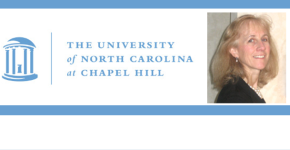 Hitting the gym can pump up your muscles, and also your skeleton.
Hitting the gym can pump up your muscles, and also your skeleton.
Janet Rubin, Professor of Medicine, Division of Endocrinology and Metabolism at the University of North Carolina Chapel Hill, explains exercise can determine whether stem cells become bone or fat.
My cell and molecular biological investigations over the last 20 years have been aimed at understanding the control of bone remodeling. In the last several years, we have studied how mechanical forces, including strain, shear and vibration, alter the lineage decisions which are made by mesenchymal stem cell (MSC) precursors of bone, fat and other musculoskeletal elements. Our fundamental studies have characterized signaling pathways by which loading prevents adipogenesis and promotes osteogenesis. The MSC cytoskeleton undergoes reorganization upon stimulus of the same mechanical signal pathways, both affecting βcatenin delivery to the nucleus as well as other signals. Recently we have found that intranuclear actin induces osteogenesis in MSC, and enhances other osteogenic programs.
Osteoblasts
When we exercise, our skeletons respond by strengthening and laying down new bone where it is needed. Exercise works by stimulating bone marrow stem cells to become bone forming osteoblasts. In contrast, were we to sit on the couch indefinitely, our stem cells can choose to become fat cells — leaving our skeletons osteoporotic and susceptible to fracture.
Cells have their own skeleton in miniature – an actin cytoskeleton. Like the struts of a tent, this actin cytoskeleton determines the shape of the cell, and the struts transmit physical forces generated during exercise from outside the cell into the cell nucleus. In this way, force can modulate gene expression.
My lab is interested in how cytoskeletal structure contributes to the determination of stem cell fate. Since osteoblasts have more actin struts than do fat cells, we predicted that if we broke down stem cell cytoskeletons using cytochalasin D, a naturally occurring substance from mold, the cells would become fat. Instead, after destroying the actin polymers, we found that cytochalasin strongly promoted osteoblast differentiation! Importantly, actin molecules must enter and remain within the nucleus, where they turned on bone genes.
What really surprised us was that injecting a small amount of cytochalasin into the marrow space of mice caused bone formation. This suggests that this process could one day be used to make bone. For example, you could force stem cells already present in bone to become osteoblasts creating bone sealing around hip replacements, or at poorly healing fracture sites.
By the way, you still need to exercise to keep your stem cells and your skeleton healthy under normal conditions!



Comments
One response to “Janet Rubin, University of North Carolina Chapel Hill – Osteoblasts”
Why did you predict that “if we broke down stem cell cytoskeletons using cytochalasin D, a naturally occurring substance from mold, the cells would become fat”? Why was cell differentiation different?